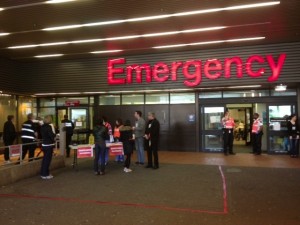Normal
0
false
false
false
MicrosoftInternetExplorer4
st1:*{behavior:url(#ieooui) }
/* Style Definitions */
table.MsoNormalTable
{mso-style-name:”Table Normal”;
mso-tstyle-rowband-size:0;
mso-tstyle-colband-size:0;
mso-style-noshow:yes;
mso-style-parent:””;
mso-padding-alt:0in 5.4pt 0in 5.4pt;
mso-para-margin:0in;
mso-para-margin-bottom:.0001pt;
mso-pagination:widow-orphan;
font-size:10.0pt;
font-family:”Times New Roman”;
mso-fareast-font-family:”Times New Roman”;
mso-ansi-language:#0400;
mso-fareast-language:#0400;
mso-bidi-language:#0400;}
Normal
0
false
false
false
MicrosoftInternetExplorer4
st1:*{behavior:url(#ieooui) }
/* Style Definitions */
table.MsoNormalTable
{mso-style-name:”Table Normal”;
mso-tstyle-rowband-size:0;
mso-tstyle-colband-size:0;
mso-style-noshow:yes;
mso-style-parent:””;
mso-padding-alt:0in 5.4pt 0in 5.4pt;
mso-para-margin:0in;
mso-para-margin-bottom:.0001pt;
mso-pagination:widow-orphan;
font-size:10.0pt;
font-family:”Times New Roman”;
mso-fareast-font-family:”Times New Roman”;
mso-ansi-language:#0400;
mso-fareast-language:#0400;
mso-bidi-language:#0400;}
Fifteen minutes after the imaginary plane crashed yesterday morning at Vancouver International Airport, four hospitals in Vancouver were receiving calls alerting them to the incident and informing them that dozens of pretend people were being transported to their facilities. Minutes later, dozens of staff and volunteer enthusiastically jumped to attention as the hospitals initiated their emergency response plans.
The phone call was real, the fire on the runway was real and the hospital’s testing of their Code Orange emergency response plan was real. But the event itself was fake, developed by a large, multidisciplinary team to test interagency collaboration and communication; assistance for international family and friends looking for passengers; and airline customer care plans and the interface between airline representatives and receiving hospitals (patient tracking and family reunification).
Four hospitals – including Richmond, St. Paul’s and Vancouver General Hospital – participated in the large-scale emergency practice exercise, along with Vancouver International Airport and 27 community partners. The scenario involved a crash outside of Vancouver International Airport (YVR) at 9am. The Aircraft involved is a Boeing 767-300, operated by Crisis Air, inbound to YVR from Tokyo. 191 people were on board and many were injured.
During the two and half hours that followed that first call, key elements of the hospitals Code Orange Emergency Response Plans were tested including: emergency activation systems (AOC, Emergency Response Teams, etc.); ED triage and treatment; role of a single, central patient information officer; role of a Family Information and Support Centre; Emergency Operations Centre (EOC) activation, operations and communications, including inter-hospital communications.
Two new elements tested
This was the first trial of a new code orange patient tracking protocol that was being tested at all the receiving hospital sites participating in the exercise. For a first time, the process went quite well and it’s very clear that we are on the right track in gathering disaster patient information from multiple sites and collating it at a central point. This allows for better support to patient friends and family as well as partner agencies in need of information.
PHC’s Psychosocial (PS) Team was also activated during yesterday’s exercise and established, for the first time ever, a Family Information and Support Centre (FISC). The Centre is designed to support psychosocial casualties and help reunite loved ones. Their primary objective is to provide immediate, short-term support to individuals involved in an incident.
How did we do?
In the debrief that followed the exercise, participants reported that it had been an effective, productive exercise. Many
tools, procedures and people were singled out for praise and areas requiring further work, education or practice were identified and will be addressed in the coming weeks to further strengthen our ability to respond to a real event.
We would like to thank everyone who was involved in the exercise, from the initial planning through to yesterday’s practice exercise. Your commitment to emergency management is commendable and your incredible knowledge and skill during the practice exercise is, as always, truly inspiring. We always hope a real emergency never happens but -as the plane crash in 2010, sawmill explosion and hockey riot demonstrated – it is just a matter of time and, at that time, it’s critical that healthcare professionals are ready to rise to the challenge. Responding to disasters is very stressful and difficult but the practice and learning that took place yesterday will help build on our successes during future emergencies.
More video and photos
To view more photos of exercise, click here.

